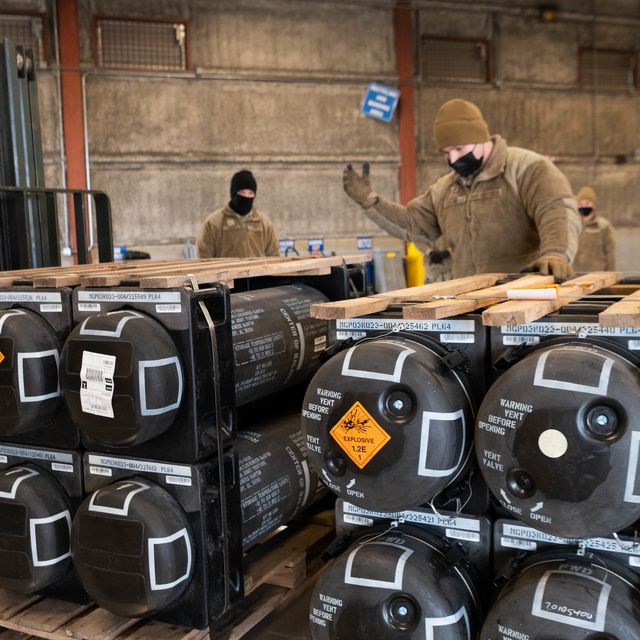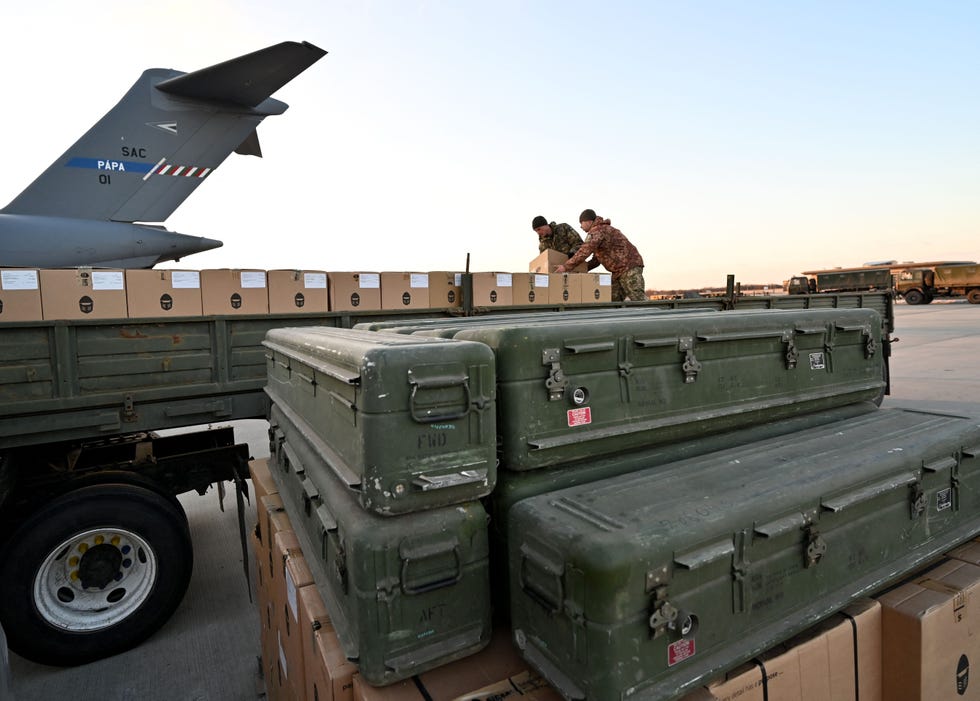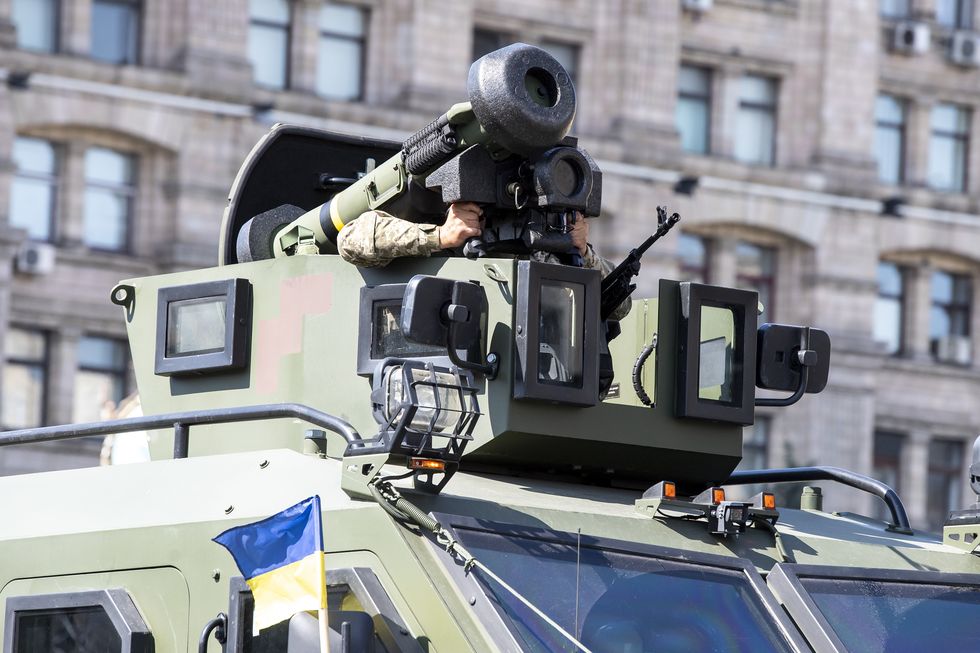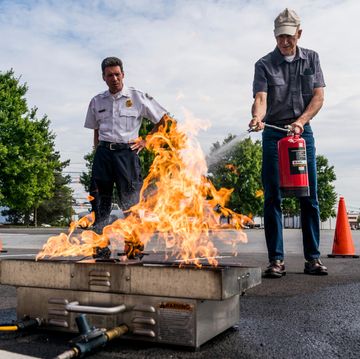- Daily shipments of U.S. military aid to Ukraine have included thousands of anti-tank and anti-aircraft missiles.
- These weapons have made a definite impact on the battlefield, but the shipments have also eaten into U.S. stockpiles of arms reserved for war.
- Some of the weapons, particularly the Stinger missile, haven’t been produced for years.
The Pentagon’s response to Russia’s invasion of Ukraine has been swift and nonstop, delivering thousands of rockets, missiles, small arms, and howitzers since the war began on February 24. The Department of Defense is now becoming a victim of its own success, however, having delivered so many weapons to Ukraine that the shipments have made a visible hole in the U.S. military’s own wartime stockpiles. Officials are already negotiating for brand-new shipments, but some weapons—out of production with no easy way to start building them again—won’t come easy.
Since the beginning of the war, the U.S. has delivered a stunning $3.8 billion in military aid to support Ukraine, according to the Department of State. It ships the weapons and supplies via Air Mobility Command transport planes across the Atlantic to military bases in Poland. From there, the equipment is sent by truck and train to Ukraine. The result has been devastating: Russia has lost at least 342 tanks and more than 1,000 armored personnel carriers and infantry fighting vehicles; a significant number of those losses can be attributed to Javelin missiles.
So far, the Department of Defense has sent at least 5,500 FGM-148 Javelin anti-tank missiles and 1,400 FIM-92E Stinger anti-aircraft missiles to Ukraine. These are big numbers even by Pentagon standards; Mark Cancian, a senior adviser at the Center for Strategic and International Studies estimates the U.S. has sent Ukraine about one-third of its total inventory of Javelin missiles, and one-quarter of its stockpile of Stinger missiles. The stockpiles are maintained worldwide to ensure the armed forces can respond to emergencies across the globe—from Russia in Europe, to China and North Korea in Asia— and even respond to multiple emergencies simultaneously.
The United States, Poland, and Estonia have sent Javelins to Ukraine, weapons that all three countries will eventually need to replace. The Javelin missile, first issued in the mid-1990s, is still in production. To replenish those stockpiles, Lockheed Martin is set to ramp up production of the Javelin from 2,100 a year to 4,000 missiles a year. Although that sounds like a lot of missiles, it would still take two years at that rate just to backfill America’s Javelin inventory. The company will also require additional time to set up the supply chain to provide parts for the missiles, no small feat considering the global shortage of semiconductors, which the Javelin’s guidance system is reliant upon.
Another lag in the schedule is a lengthy delivery time, which is currently 32 months— meaning missiles are delivered 32 months after the missiles are ordered. Unless this is shortened by boosting production, it will take nearly three years for the first new missiles to get to troops in the field.
Producing more Stinger missiles will be trickier. Stinger was first introduced in the 1980s, and according to Cancian, the U.S. ceased buying the missiles in 2003. Raytheon’s Stinger production line was sustained for another 17 years on overseas orders, but finally closed in December 2020. The Stinger is a decades-old part design that is obsolete by modern standards, and many of its components, including microchips, are no longer in production. Raytheon’s CEO says it will take six to 12 months to restart the production line, and it will redesign the missile’s seeker, which sees in both infrared and ultraviolet light, to use currently available components.
Replenishing the supply of Stingers and Javelins will take months to years. Fortunately, demand is now reduced. Thanks in large part to both weapons, the Russian Army is in shambles, and is only a threat to its smallest neighbors; Russia’s difficulties might well make China think twice before making the decision to invade Taiwan. The U.S. and its allies may have bought themselves some time with their decision to send arms to Ukraine.
The supply issues the U.S. is facing could have been even worse if the Army and Marines found themselves fighting a war on multiple fronts. The Ukraine war will force the Pentagon to confront the issue of how to surge production on weapons in emergencies, allowing the government to receive new-build weapons in weeks, not months or years. A future conflict may depend on both government and industry getting this right.

Kyle Mizokami is a writer on defense and security issues and has been at Popular Mechanics since 2015. If it involves explosions or projectiles, he's generally in favor of it. Kyle’s articles have appeared at The Daily Beast, U.S. Naval Institute News, The Diplomat, Foreign Policy, Combat Aircraft Monthly, VICE News, and others. He lives in San Francisco.















